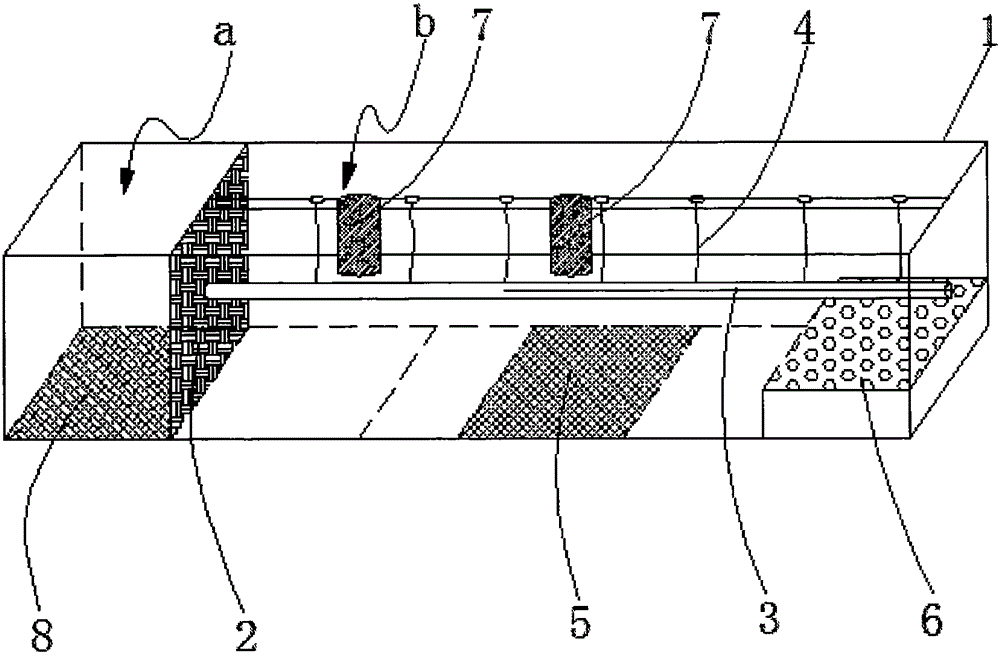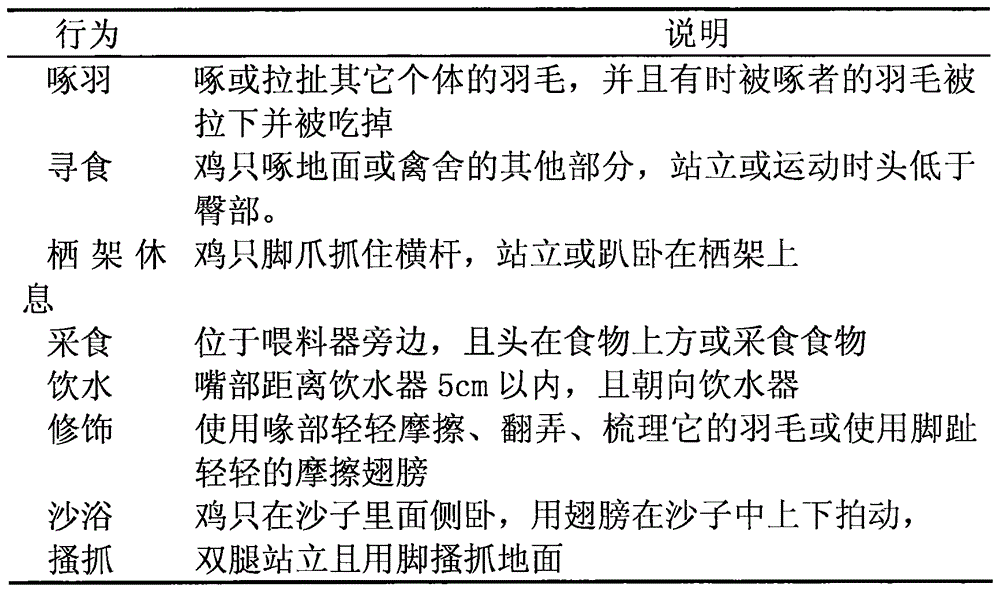Chicken coop for improving benefit level of laying hen
A chicken cage and horizontal technology, which is applied in the field of animal husbandry, can solve the problems of low welfare level of laying hens, monotonous environment of chicken cages, difficulty in expressing pecking behavior, etc., so as to improve skin and feather quality, improve slaughter quality, and reduce pecking behavior. Effect of Feather Incidence
- Summary
- Abstract
- Description
- Claims
- Application Information
AI Technical Summary
Problems solved by technology
Method used
Image
Examples
Embodiment 1
[0016] see figure 1 , a chicken cage for improving the welfare level of laying hens, which includes a chicken cage body 1, and the chicken cage body 1 separates an egg production area a and a rest area b through a door curtain 2, and the egg production area a is a whole A square box body is provided with a perches cross bar 3 horizontally in the box body, and the two ends of the cross bar 3 are respectively fixed on the two ends of the box body, and several thin ropes 4 are hung on the top of the rest area b. Foot pads 5 and sand bath trays 6 are laid on the bottom of the rest area b, pecking pads 7 are respectively provided on the left side and the middle of the rest area b, and straw 8 is laid on the bottom of the egg-laying area a.
[0017] The chicken coop is divided into egg-laying area a and rest area b. The length is 2 meters and the width is 60 cm. The egg-laying area a is a square wooden box with a length and width of 60 cm. Straw 8 is laid inside, and there is a door...
Embodiment 2
[0019] In this example, Hailan white-feathered laying hens were selected as experimental animals. From the age of 0 weeks, 300 Hailan white feather hens were raised. The formal test started from the first week of age, randomly selected 300 laying hens with uniform weight and strong body, and randomly divided them into 20 groups, with 15 chickens in each group. Among them, 10 groups were raised in the welfare-type chicken cages, and 10 groups were raised in traditional chicken cages. Using traditional chicken cages, only drinking water and feed are provided, without foot pads, peck pads, perch bars, sand tables, and hanging strings. In the brooding period, a comparative experiment was carried out by comparing welfare-type chicken cages with traditional chicken cages.
[0020] One target animal was selected among 5 chickens in each replicate group and marked by smearing paint on the body of the chicken. During the experiment, observe its feather pecking and other behaviors. ...
Embodiment 3
[0030] In this example, Hailan white-feathered laying hens were selected as experimental animals. From 0 weeks old, 200 Hailan white feather hens were raised. The formal test started from the 6th week of age, randomly selected 120 laying hen chicks with uniform weight and strong body, and randomly divided them into 20 groups, with 6 chickens in each group. Among them, 10 groups were raised in the welfare-type chicken cages, and 10 groups were raised in traditional chicken cages. Using traditional chicken cages, only drinking water and feed are provided, without laying boxes, foot pads, pecking pads, perch bars, sand trays, and hanging strings. In the rearing period, a comparative experiment was carried out by comparing welfare-type chicken cages with traditional chicken cages.
[0031] The behavior observation method and statistical analysis of this embodiment are the same as those in Embodiment 2.
[0032] The experimental results are shown in Table 3, the results of compa...
PUM
 Login to View More
Login to View More Abstract
Description
Claims
Application Information
 Login to View More
Login to View More - R&D
- Intellectual Property
- Life Sciences
- Materials
- Tech Scout
- Unparalleled Data Quality
- Higher Quality Content
- 60% Fewer Hallucinations
Browse by: Latest US Patents, China's latest patents, Technical Efficacy Thesaurus, Application Domain, Technology Topic, Popular Technical Reports.
© 2025 PatSnap. All rights reserved.Legal|Privacy policy|Modern Slavery Act Transparency Statement|Sitemap|About US| Contact US: help@patsnap.com



